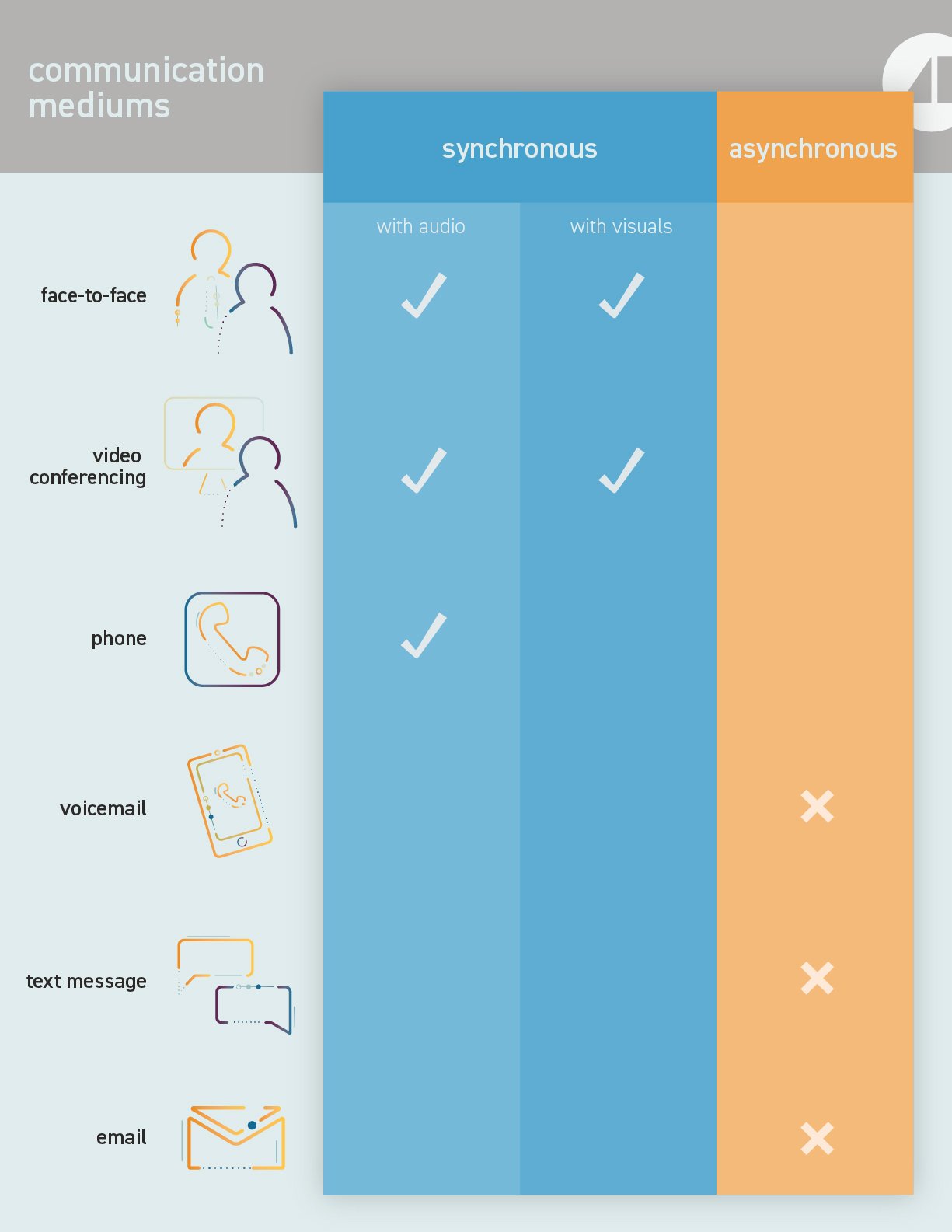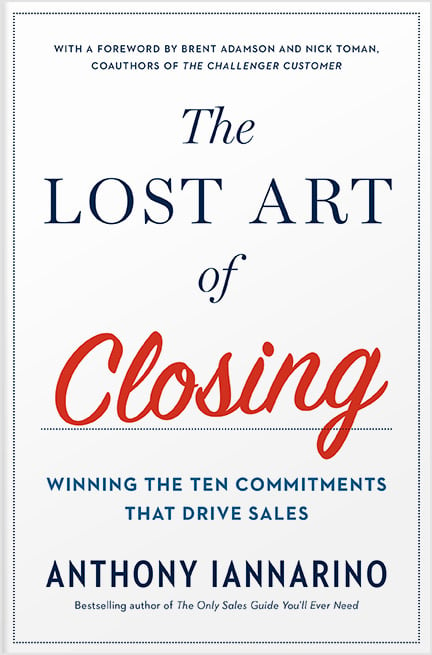The Gist:
- There are two type of mediums of communication we use for client conversations: synchronous and asynchronous.
- Salespeople have been taught to rely on the asynchronous mediums—even when it harms their results.
- You should always prefer the medium that is best for the outcome you are trying to create.
There are two types of methods for communicating with your clients and prospects: in synchronous mediums, both parties are present and can both speak and listen, while in asynchronous mediums one person communicates to an absent audience, offering them the option to respond later—or not to respond at all.
Synchronous mediums are far more valuable to effective selling, but many sales organizations and salespeople choose asynchronous methods—especially asynchronous email—to communicate with their clients and their prospects. Don’t choose a medium based on preference (yours or your client’s) or on what you find to be most efficient. Instead, select one based on the importance of your message’s outcome.


The Problem with Voicemail
Say you need to speak with your client. When you call them, they are away from their phone, so you leave them a voicemail to tell them that you had a couple questions about some topic that is critically important to their results and your chances of winning their business. At the end of that message, you inform your contact that you are going to be away for the afternoon and to please leave their response on your voicemail, so you can make sure you understand their need well enough to get their solution right.
Later, you listen to your prospective client’s voicemail message and gain a better understanding of their needs. It’s after work hours, so you call and leave your client another voicemail message, asking them to clarify something they said. And because they are in a different time zone, you again ask them to leave the answer on your voicemail, so you can take care of any necessary changes when you start work the next day.
You’re probably thinking that this is an absurdly inefficient way to have a conversation, and you’re right. If you are like most people, you believe this conversation would be better had over email, even though the human voice conveys exponentially more information than the written word. But in sales, you’re not trying to improve your communicative efficiency. You are trying to create the kind of value that serves your client in producing better results, in such a way that it creates a preference to buy from you instead of one of your many competitors. Using any asynchronous medium—go ahead and tell me how email is significantly different from voicemail tag—is a poor approach, since both provide “efficiency” while lessening your ability to create value and a preference.


Is Conversation Necessary?
I am expecting an email today to tell me when I can expect a package to be delivered. I bought the item from a store in Cincinnati, and the item needs to be shipped to the store before it can be shipped to me. While it would be nice for the shop owner to call me to tell me personally when I will receive my order, it isn’t necessary because there is no conversation needed. Were the shop owner to call me, however, I would feel a greater obligation to buy from them because a personal call shows a stronger commitment to our working relationship. I would recognize that they appreciate my business enough to do more than what is now customary, something that would almost certainly prompt repeat business.
The right way to determine when to use synchronous or asynchronous mediums is to weigh the importance of the conversation. Let’s use another two categories here: sales conversations and transactional conversations. Let’s define a sales conversation as any conversation where you are trying to create value for a client, create a preference to buy from you, advance your sales process, or ask your contact for some commitment. Transactional conversations, by contrast, don’t require a conversation.
Since prospecting is part of your sales process, asking a prospect for the commitment of time is important enough that you should use a synchronous medium. Because discovery is where you do the most work differentiating yourself and where you create much of your consultative value, those conversations do not in any way benefit from a back-and-forth over asynchronous email or voicemail. In fact, if your plan is to send your proposal and pricing over email without actually walking the client through their solution and the investment, you’re offering a transactional sale, not a consultative one.
None of this, by the way, means that transactional communication is useless. For instance, I received a transactional email yesterday, following up on a conversation the sender and I had two days ago, to remind me about our next meeting and asking me to sign a document. Emails like that are part of how we communicate, and they are useful when the communication mediums would not be improved by a synchronous conversation.

Ranking Sales Mediums
Face-to-Face: This is the platinum standard in communication, and it should be your first choice for all sales conversations—even if it is inconvenient, and even if you or your client would prefer another medium.
Video Conference: The gold standard is now the face-to-face video call. Human communication is greatly improved by the visual and audio cues that, even seen through a webcam darkly, are much better than any asynchronous communication available.
The Phone: While it is missing the visual component in the first two preferred mediums, a phone call is synchronous and the audio connection gives it a boost over asynchronous mediums. Let’s call this the silver standard.
When possible, choose one of these synchronous mediums for important client conversations. The others are inadequate to the outcomes of creating value for the client and a preference to buy from you.
Voicemail: Voicemail, containing an audio component, is more valuable than an email. Your client gets to hear your voice. Even if you are going to send an email, leave a voicemail first.
Text Message: This medium is no longer new. When it was new, the responses from your contacts were almost instantaneous. Now, your texts are sometimes treated like an email.
Email: If face-to-face is the platinum standard, then email might be called the “sand standard,” something glorified by Silicon Valley and its microchips, but little more than a trap for serious salespeople.
Do Good Work:
- Stop using asynchronous mediums for important sales conversations.
- Develop an active preference for synchronous communication mediums.
- Teach and train your clients that when they email, you will pick up the phone and call them back.

Essential Reading!
Get my 2nd book: The Lost Art of Closing
"In The Lost Art of Closing, Anthony proves that the final commitment can actually be one of the easiest parts of the sales process—if you’ve set it up properly with other commitments that have to happen long before the close. The key is to lead customers through a series of necessary steps designed to prevent a purchase stall."
Buy Now







.jpg?width=768&height=994&name=salescall-planner-ebook-v3-1-cover%20(1).jpg)


